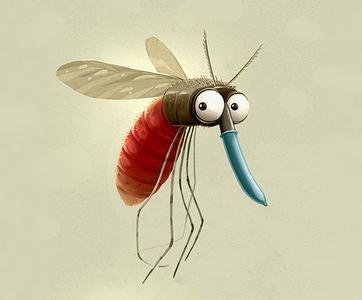PNAS:用CRISPR-Cas9技术编辑蚊子基因组

来自弗吉尼亚理工大学的生命科学研究人员,推动了一种改变游戏规则的技术用于研究地球上最致命的一种带病动物。在本周的《美国国家科学院院刊》(PNAS)上研究人员报告了一种改进的方法,利用称作为CRISPR-Cas9的基因组编辑技术来研究蚊子的基因。
编辑生物的基因组使得科学家们可通过删除某些基因或是添加新基因来观察生物体受累的情况。这一新技术让编辑过程变得更有效,并有可能加快研究努力开发出新的蚊虫防治或疾病预防策略。
农业和生命科学学院昆虫学副教授、Fralin生命科学研究所成员Zach N. Adelman说:“我们将评估带病蚊子中一些基因的人力资本降低了10倍。许多的研究小组没有这些资源,要花费4个月的时间对多达5,000个蚊子胚胎展开研究工作,调查一个最终有可能与研究工作无关的基因。现在,他们有可能可以在一周内完成相同的调查研究。”
蚊子可以传播病原体,引起疟疾、登革热和其他一些具有高影响的疾病。根据世界卫生组织的数据,2013年疟疾导致了约58.4万人死亡,其中大多数为幼儿。微软的创始人、慈善家Bill Gates将蚊子称作为是世界上最致命的动物。
农业和生命科学学院昆虫学副教授、Fralin生命科学研究所成员Kevin M. Myles说:“蚊子在疾病的传播中起着非常重要的作用。有了这一模型,对蚊子的某一表型存在疑问的所有科学家现在都可以找到它的遗传原因。这对于从事蚊子生物学的基础研究以及控制疾病媒介物蚊子的应用研究都具有重要的意义。”
长期以来科学界都在齐心协力地对抗一些蚊媒疾病。
康奈尔大学昆虫学系主任及教授Laura C. Harrington(未参与该研究)说:“这篇论文让我感到非常兴奋。我们迫切需要更快速、更有效的方法来改造蚊子。这一难题阻碍了整个领域生成一些重要的研究发现,来促成有效的新方法控制蚊子及疾病。”
自CRISPR技术在2012年出现以来,它显著地缩短了研究人员重写生物体DNA的时间。医学和生命科学家们很快看到了这一技术在编辑人类致病基因以及在蚊虫研究中策略性改造蚊子基因组的潜力。
然而当蚊子基因组受到损伤时会触发一些自然修复机制,减少新序列插入基因组的机会可以帮助科学家评估一些基因。
Adelman、Myles和同事们通过开发出一个过程沉默蚊子的一个重要DNA修复机制克服了这一障碍,确保了导入的改变更有可能成为蚊子基因组的一个永久组成部分,因此提高了阐明新基因在蚊子生物学中所起作用的机会。
佛罗里达国际大学生物分子科学研究所助理教授Matthew DeGennaro(未参与该研究)说:“我利用基因组编辑来了解蚊子是如何找到它们的宿主的,并最终设计出一些新的驱避剂和引诱剂来操控蚊子的行为。对我而言,这项研究显示了CRISPR系统在蚊子中的强大功能。研究人员还改良这一技术提高了精确插入DNA的可能性,使得CRISPR更加的有用。”
Conventional control strategies for mosquito-borne pathogens such as malaria and dengue are now being complemented by the development of transgenic mosquito strains reprogrammed to generate beneficial phenotypes such as conditional sterility or pathogen resistance. The widespread success of site-specific nucleases such as transcription activator-like effector nucleases (TALENs) and clustered regularly interspaced short palindromic repeats (CRISPR)/Cas9 in model organisms also suggests that reprogrammable gene drive systems based on these nucleases may be capable of spreading such beneficial phenotypes in wild mosquito populations. Using the mosquito Aedes aegypti, we determined that mutations in the FokI domain used in TALENs to generate obligate heterodimeric complexes substantially and significantly reduce gene editing rates. We found that CRISPR/Cas9-based editing in the mosquito Ae. aegypti is also highly variable, with the majority of guide RNAs unable to generate detectable editing. By first evaluating candidate guide RNAs using a transient embryo assay, we were able to rapidly identify highly effective guide RNAs; focusing germ line-based experiments only on this cohort resulted in consistently high editing rates of 24–90%. Microinjection of double-stranded RNAs targeting ku70 or lig4, both essential components of the end-joining response, increased recombination-based repair in early embryos as determined by plasmid-based reporters. RNAi-based suppression of Ku70 concurrent with embryonic microinjection of site-specific nucleases yielded consistent gene insertion frequencies of 2–3%, similar to traditional transposon- or ΦC31-based integration methods but without the requirement for an initial docking step. These studies should greatly accelerate investigations into mosquito biology, streamline development of transgenic strains for field releases, and simplify the evaluation of novel Cas9-based gene drive systems.
作者:Sanjay Basu

